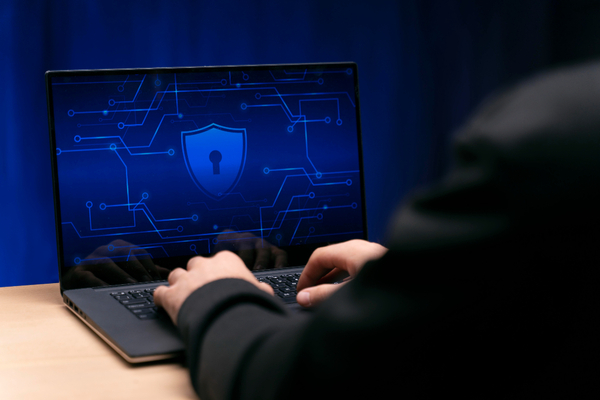5 Essential Facts Everyone Should Know About Cybersecurity

In today's online interconnected landscape, information should be secured against any kind of cyber threat that targets any critical information. These need to be understood regarding basic aspects of cybersecurity. Here are five must-know online safety tips everyone should understand to stay secure in this digital age.
Cyber Threats Are Evolving Rapidly
The world of cybersecurity is constantly changing with the smarter cybercriminals. Every time technology improves, people start finding new ways to exploit weaknesses. Cyber threats include phishing e-mails, ransomware, malware, DDoS attacks, and data breaches through which hackers get hold of private information. Phishing scams trap people by sending them spurious emails to collect secret information, such as their passwords or credit card details. There is also a huge growth in ransomware attacks. Here, cybercriminals encrypt the data and then demand ransom.
This leads to financial loss and badmouthing for the company. Advanced technologies like AI and machine learning are being used by attackers to gain more accurate and powerful attacks. Here, AI-based malware also learns and changes, thereby making it tough to locate and stop it. They have mind tricks to exploit human psychology. They conjure very convincing scams to attract even the smartest into hooking themselves. Organizations and people need to stay vigilant and take action against such threats in evolution.
Software and systems need to be updated firewalls must be very tight threat detection has to be implemented. The sharing of information about the threats by companies and governments is crucial to staying ahead of these attackers. The dangers online are developing constantly, so there's a need to learn more and be alert on such matters. Understanding threats helps build a strong defense. With fast-changing technology, one has to be constantly educating himself or herself in terms of cybersecurity. Continuous learning and vigilance are paramount to a safe online space.
Human Error Is the Biggest Security Weakness
Even with the most advanced cybersecurity tools, it is still people's mistakes that are the main reason for security problems. Studies have shown that most cyberattacks are successful because people unwittingly grant access to the attacker. A click on a link in a phishing email may provide hackers with access to the whole company network. Legit-looking emails mimic banks, governments, or coworkers and are therefore hard to recognize without proper training. Other common problems include weak passwords and also poor administration of passwords.
Many people use the same password with other accounts or use weak passwords like "password123." Such passwords can easily be guessed by hackers using brute-force techniques. Also, failure to update software or old systems can create massive vulnerabilities that hackers will exploit. People often intensify the problem by not locking down their devices or sharing personal information on insecure networks. The organizations have to work on educating people regarding cybersecurity and making people aware of the things. Staff should not allow phishing, use robust passwords, and protect private data. Compulsory practices such as MFA and robust password policies also diminish risks.
Organizations should regularly check up on security, identify weaknesses, and simulate readiness for potential threats. Along these lines, the citizenry should be educated on common mistakes they commit in cybersecurity. To progress from the error-reduction technology, there should be a culture of value and shared accountability from all individuals. When all individuals are aware of their responsibilities in maintaining safety, then the chances of errors can be significantly diminished.
Strong Passwords Are Not Enough
It is widely assumed that password strength has been the greatest component of safe usage online for ages. In the current risk of the Internet, that's not so. Good passwords can be stolen using phishing, guessing, or leaked data revealing login information. Hackers have special tools that quickly guess passwords if they are weak or the same for many accounts. Multi-factor authentication (MFA) is another added layer of security in conjunction with a normal password.
MFA requires a one-time code that comes on the phone through text, email, or an application. Biometrics like fingerprint scanning and facial recognition are more popular these days because of their reliability and usability. They make the security better so that people cannot enter through a password. The latest form of authentication uses widely accepted passwords rather than traditional keys or tokens taken from a specific device.
Password authentication provides greater security as the experience is not complicated still one has to bear the responsibilities of passwords. Among them is an easily guessed phrase, one using a single password across a given multiple sites. Reduce that risk by changing the password regularly and through a manager to come up with a new one. Thus, proper technology and careful user conduct need to be implemented to have good protection on online accounts. There is more than a password kind of security. It can be multi-factor authentication, or even using passwordless login.
Cybersecurity Isn't Just a Technology Problem
Cybersecurity is typically viewed as a computer-related issue, centered on firewalls, antivirus programs, and encryption. However, this view misses important human, organizational, and strategic parts of cybersecurity. Technology by itself can't fix cybersecurity problems. We need to look at the whole picture, which includes processes, rules, and the people involved. Companies must foster a security-conscious mindset where all understand online safety's importance. Everyone who works here needs to know how important their job is in keeping private information safe.
A strong security setup by a tech team can be jeopardized if one worker clicks on a malicious link. Regular training sessions simulating online threats, such as phishing scams, can help employees effectively recognize and address attacks. Also, groups need strong rules and plans for dealing with problems. A clear plan helps teams respond fast to reduce damage when a security problem occurs. This involves tracing the attack source, isolating impacted systems, and restoring normal operations. Rules on information access, data organization, and device usage must be adhered to for risk reduction. Overall, cybersecurity needs teamwork between different areas.
Governments, businesses, and international groups must work together to share threat information and strengthen global defenses against cybercrime. Many cyber threats, like ransomware, cross country borders, so countries need to work together. For people, understanding that cybersecurity is not just about technology means developing good habits. This includes protecting personal devices, using safe internet connections, and being aware of online dangers. Cybersecurity involves both using tools and cultivating a mindset where safeguarding digital data becomes instinctive.
Privacy and Cybersecurity Are Inextricably Linked
In today's digital world, privacy and online safety are closely connected. Keeping personal information safe is the main goal of today's online security efforts due to its high value. Cybercriminals often look for personal information, like names, addresses, bank details, and health records. They use this information to steal identities, commit fraud, or threaten people. Big data leaks, like those involving well-known companies or government organizations, show how crucial it is to protect personal information.
These problems not only lead to money loss but also destroy people's trust. The GDPR in Europe and the CCPA in the US are key data protection laws. New rules aim to enhance data protection by holding organizations accountable for safeguarding your private information. For people, keeping private means being careful about what information they share on the internet. Social media is a prime resource for cybercriminals who exploit shared information to launch targeted attacks. Protect your online information by sharing less, adjusting privacy settings, and understanding service terms for safety.
Organizations should prioritize privacy by integrating security features throughout the development of their products and services. Data minimization and encryption reduce risks significantly. Transparency is key. Businesses must clarify their data practices to empower customers with more control over their information. Privacy and cybersecurity are interdependent. Cybersecurity safeguards personal data, while privacy regulations ensure the protection of valuable information. Individuals and businesses must recognize and value this connection.
Conclusion
Cybersecurity is a complex problem that affects many parts of our online lives. Rapidly evolving threats and human actions are crucial factors. Understanding five key facts helps individuals and organizations mitigate cyber risks. Technology is important, but it is just one part of finding the answer. Creating a culture of awareness, using strong security measures, and focusing on privacy are all equally important.
In a world where online dangers are unavoidable, being ready and paying attention are the best ways to stay safe. Stay informed, act, and protect personal and work lives online from risks to use the internet safely.








